Volunteer journey mapping: managing experiences with NGOs
Volunteer journey mapping is an important tool for nonprofits looking to create engaging and rewarding experiences for their volunteers. By mapping out the volunteer journey, nonprofits can identify pain points, opportunities for improvement, and ways to enhance the overall volunteer experience.
Supporting people in need like children, elderly people, people with disabilities, people in economically poor regions, but also animal welfare, nature, and sustainability.
In this article, we take one component that unites many nonprofit organizations: they depend on a very limited budget and, hence, heavily rely on volunteers, without receiving any salary or any other extrinsic motivators. Without these volunteers, the organizations would hardly be able to have the impact they strive for.
In this article, we'll discuss how volunteer journey mapping can help NGOs to better connect with volunteers:
- The importance of volunteer journey mapping in a nonprofit context
- Questions to solve in volunteer journey management
- How to create a journey map for volunteer managment
- Example journey map: volunteer journey
- Challenges of introducing journey mapping in a nonprofit
- Summary
Listen to the audio version of journey mapping in NGOs!
To get notified when a new podcast episode is live, follow us on Spotify, Google Podcasts or iTunes.
Why is volunteer journey mapping important?
Volunteer journey mapping is important because it helps nonprofits to understand the experience of their volunteers at different touchpoints and stages of their journey. By mapping out the volunteer journey, nonprofits can identify pain points, opportunities for improvement, and ways to enhance the overall experience.
Here are some reasons why volunteer journey mapping is important:
- Enhancing the volunteer experience: By understanding the volunteer journey, nonprofits can identify ways to make the experience more engaging, rewarding, and fulfilling for volunteers. This can help to improve volunteer retention, satisfaction, and overall impact.
- Identifying pain points: Volunteer journey mapping can help nonprofits to identify areas where volunteers may experience frustration or difficulty. This can include issues such as unclear expectations, lack of communication, or inadequate training. By addressing these pain points, nonprofits can improve the overall experience for volunteers.
- Creating a more personalized experience: Volunteer journey mapping can help nonprofits to better understand the needs, preferences, and motivations of their volunteers. By using this information to personalize the experience, nonprofits can create a more engaging and rewarding experience for volunteers.
- Improving volunteer recruitment: Volunteer journey mapping can also help nonprofits to identify opportunities to attract and recruit new volunteers. By understanding the journey from the perspective of potential volunteers, nonprofits can create more effective messaging and outreach strategies.
Thus, volunteer journey mapping is an important tool for nonprofits to improve the volunteer experience, enhance engagement and impact, and drive mission success. By investing in volunteer journey mapping, nonprofits can build a strong and committed volunteer base that supports their mission and helps to achieve their goals.

Questions to solve in volunteer journey management
Before we start, let’s agree on a typical volunteer journey and take it as an example for the following article: A large part of volunteers commit themselves regularly, for a few hours per week, besides their actual work/studies, family time, hobbies, or whatever else they do in their life. Volunteer work is part of their spare time that they used to spend for different purposes. To engage themselves voluntarily, they renounce other interests, hobbies, activities of their lives. Hence, each week they switch between their main activity, their spare time activities, and their volunteer work.
Who are the volunteers?
Volunteers are as diverse as the NGOs they work with. They have very different backgrounds, interests, and contexts. Additionally, the NGO has an interest in having volunteers that share their vision and their values and hence try to reach and keep those folks who are on the same page.
Journey mapping and creating a persona in specific will help the organization understand:
- What makes volunteers engage themselves in general, and in my organization?
- What do they expect from their engagement?
- What personality traits should they bring to the organization so they fit the vision, values, and team?
- How do they connect this with their life outside of the organization, like work, studies, family, or other responsibilities?
- What background do they have, what skills and talents?
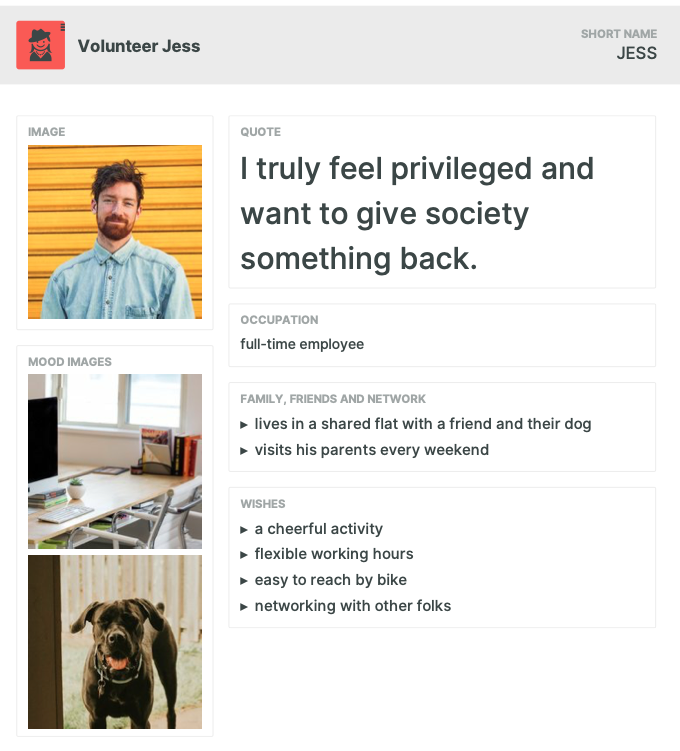
How do volunteers get to us?
Many people are interested in the work of NGOs. They support it on a theoretical basis and would defend its importance in front of others. However, only a small part of these people have ever considered engaging themselves voluntarily in such an organization.
Hence, the questions to solve when creating a journey map in this context are:
- How do they get aware of the need, and what can I derive from this knowledge?
- Do they have the chance to get to know the organization and task before committing to a long-term engagement?
- What factors affect their trust in the organizations and their fight for the good?

What does their engagement look like?
So you have the volunteer express his or her interest. It’s time to introduce them to the organization, to onboard them to the tasks and the team. Depending on the agreed schedule they will then spend a few hours per week/month or occasionally in the organization and help out with several factors.
Now a journey map can give you insights to questions like:
- Are the resources they get during the onboarding phase satisfying?
- Do the tasks they take care of fit their interests and talent and are the tasks of appropriate intensity?
- Do they have access to supervisors?
- Are the tasks they take care of fulfilling and motivating them?
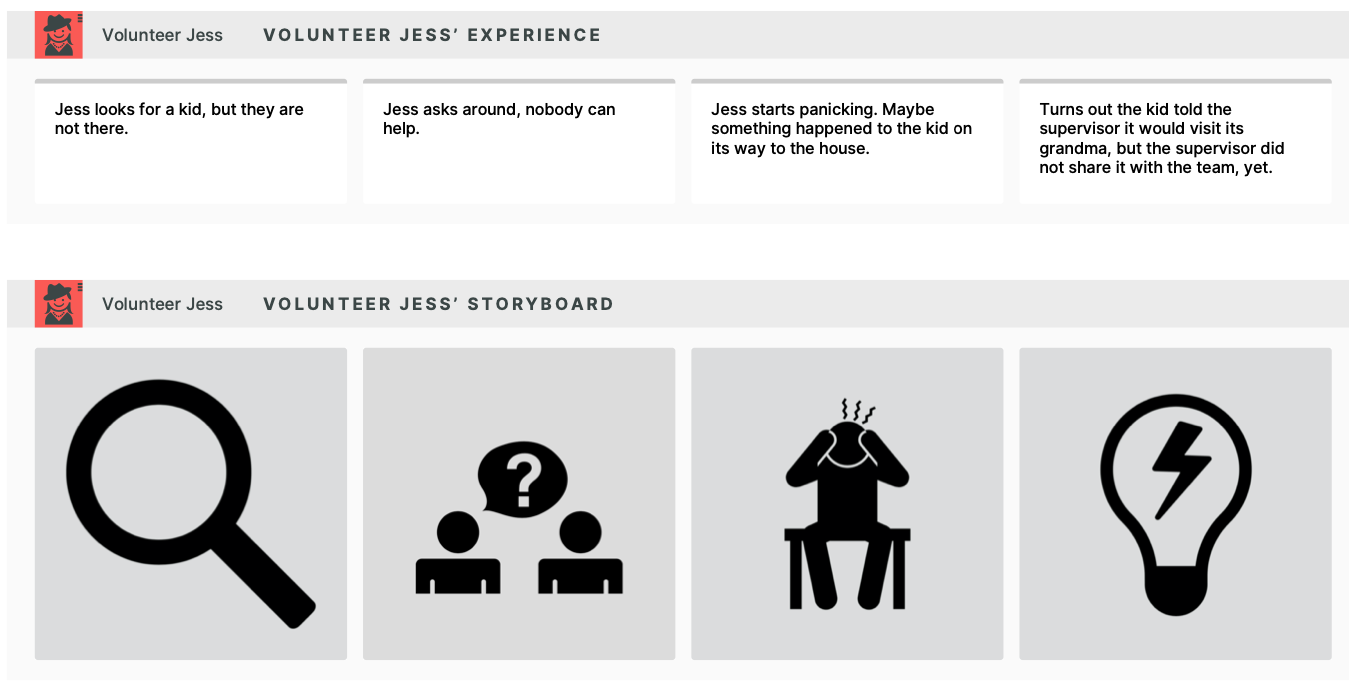
How do volunteers connect with full-time workers?
A big chunk of a volunteers’ engagement is the collaboration with others. First, many volunteers have that as the core of why they want to engage themselves: to help others, to be with others, to learn from others. Second, as a large part of volunteers usually only spend a few hours per week with an organization, they have a high risk of just being overseen by full-time workers. Especially in NGOs, resources are scarce – frequently teams are understaffed, and employees are pretty busy with their work.
Hence, journey mapping can help find out:
- Do volunteers have the chance to connect to full-time staff?
- Do volunteers have the chance to connect and share experiences with other volunteers?
- Do volunteers have a real contact person that takes them by the hand during the onboarding process and informs them about news later on?
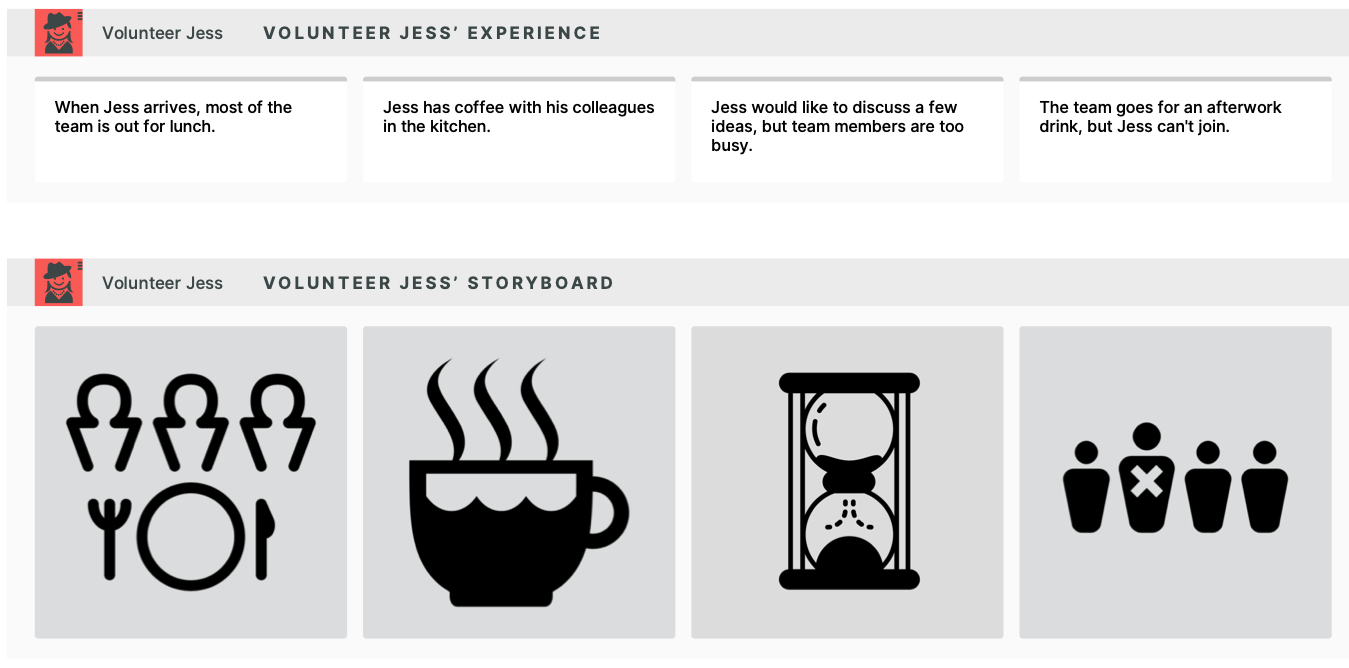
How can we support volunteers on a mental level?
Many NGOs are acting in challenging environments – either, because the topic they engage themselves for did not reach global support yet, e.g. sustainability matters, or because they work in mentally challenging fields, e.g. supporting people in hospice organizations.
Anyway, volunteers often have to handle critical moments and a journey map can help uncover these and find solutions on how to give them the support they need.
- What are the challenging moments of their engagement?
- How to help them if they are attacked for the type of their engagement?
- How to support them with mentally challenging moments?
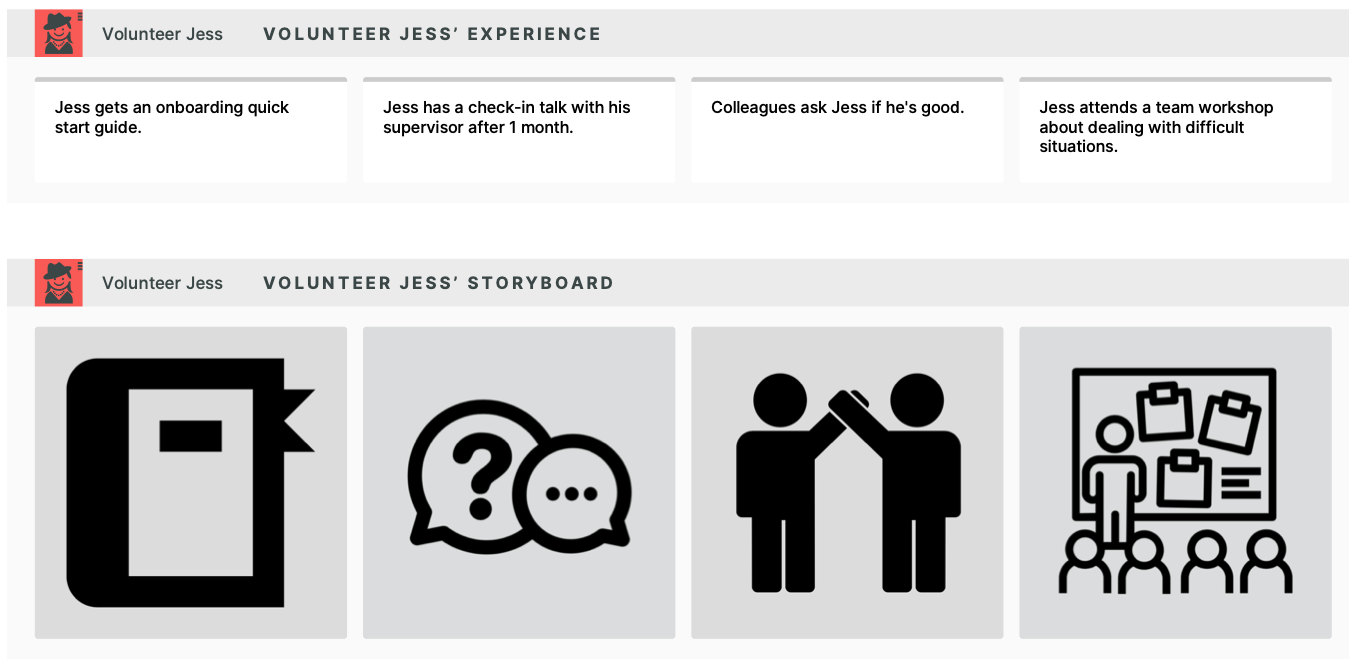
How can we thank volunteers for what they’re doing?
Most volunteers engage themselves for the pure sake – the only thing they want is to see an effect of the time and passion they invest. They truly want to make the world a better place or at least know that they’re doing good on their way towards it. This implies that there’s nothing more frustrating than not having those moments of acknowledgment.
Maybe a volunteer cannot change the world within a few hours. Even if their work did not show any impact at all, yet. However, they’re trying, struggling, doing their best, until at some point the impact will be here. During this time it is crucial to show them that the pure try is appreciated.
Journey mapping can help to understand if the reinforcement is sufficient:
- In what moments do we tell the volunteers “thank you” and show them that their work has an impact?
- Is their contribution visible enough to others?
- What moments are the most disappointing, frustrating ones and how can we help the volunteers get over it?
- Even though they cannot be remunerated for their work, but is there anything good we can do for them along their journey?
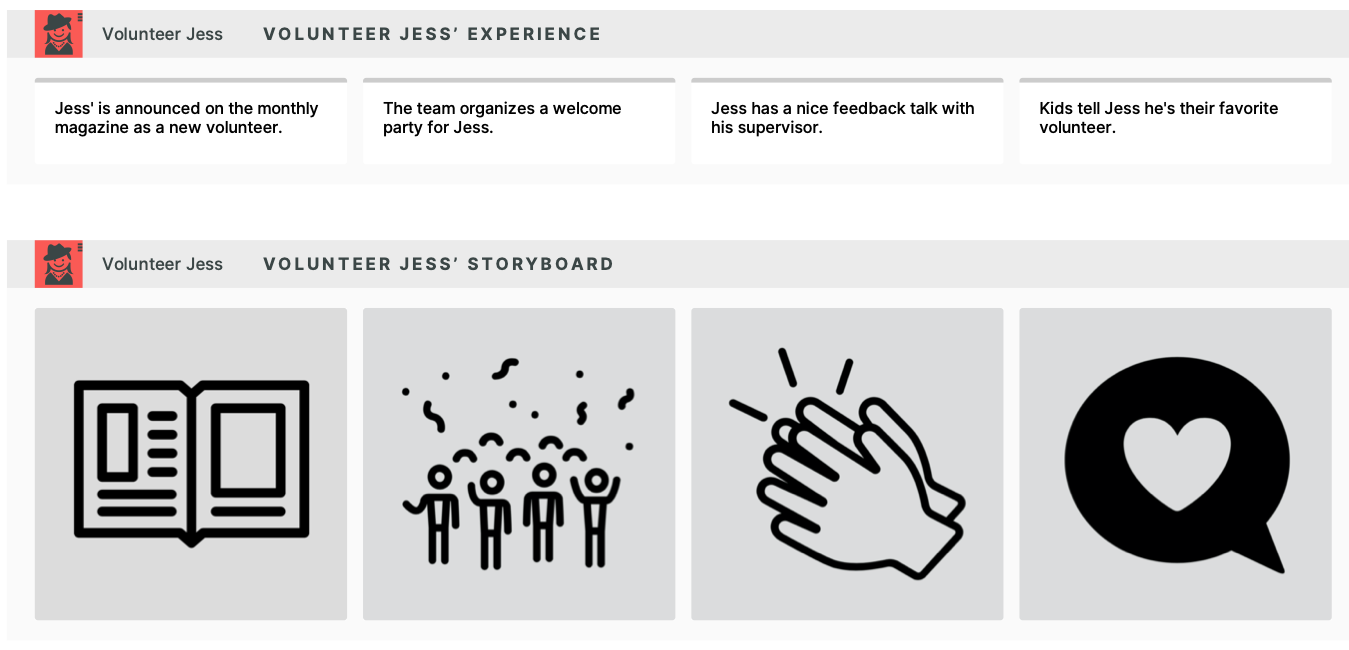
How to create a volunteer journey map
Like on any other map, there is some basic information that should be visualized on any journey map: steps, touchpoint and most importantly the emotional journey of the persona. The following type of information can help you on a journey map to analyze volunteer management.
For complex journey maps with advanced lane and content types like the ones below, it usually is better to use a journey mapping tool. To make it easier for you to choose one, we collected the best digital journey mapping solutions in this piece.
Stages
Make sure you are tackling all necessary phases of voluntary engagement, including the onboarding phase, training, and the phase after the volunteer has left. This helps to make sure that your efforts towards the volunteer do not disappear right after the onboarding.
Channels of communication
Communication is crucial for volunteers who only spend a short time with an organization. Analyzing channels of communication helps you to understand if the volunteers have access to all information they need, at the right time.
Contact persons
Make sure the volunteer always has a supervisor or colleague around to talk to in case of emergency, the pure desire of sharing a problem, or giving and receiving feedback.
Support
Add a dedicated lane to see how you are actually supporting your volunteers and where else they might need a hand with something. Again, check if your support is focused on a specific phase or if you provide it along the entire journey.
Backstage actors
Add a dedicated backstage lane to keep you aware of what other stakeholders influence the interaction between you and the volunteer. When you plan a coaching day, keep in mind your volunteers might have to work at their actual job. When you plan a Christmas party, be aware that volunteers might also need to attend the one with family. Map out all the moments where you can help volunteers to make the interaction with the outside world as smooth as possible.
For an in-depth instruction, visit our guide on customer journey mapping.
Example journey map: volunteer journey
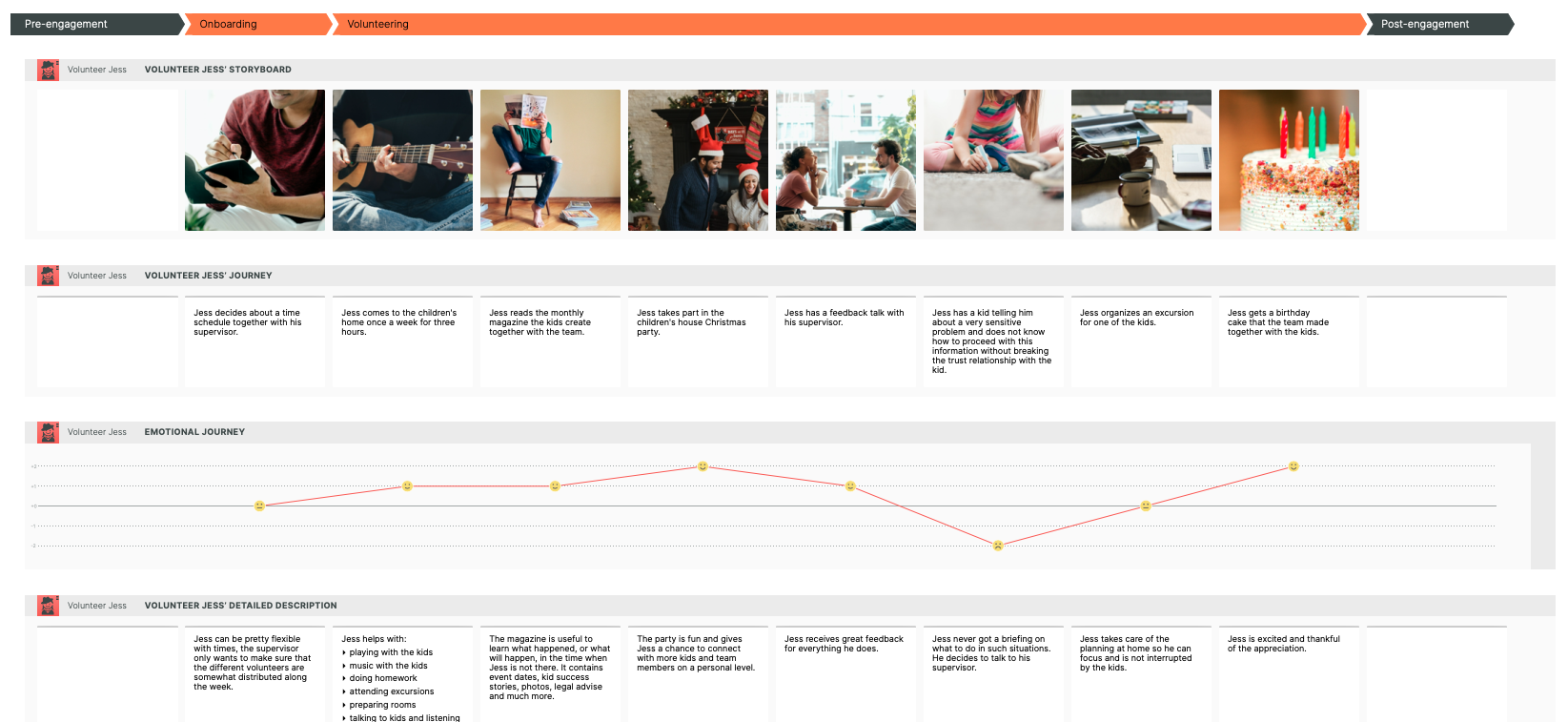
Challenges when introducing journey mapping in nonprofit organizations
NGOs prove to be very open for journey mapping projects – their striving for empathy is higher than in most other contexts. Also, journey mapping can help to improve an NGO's digital marketing strategy. However, they still experience challenges when it comes to conducting a journey mapping project:
Limited resources for innovation projects
Since many NGOs run on a very limited budget, they miss time and human resources for such projects. Everybody is busy already, and taking up an additional activity might jeopardize their primary tasks, if not managed properly. This calls for very careful time management when starting with such a project.
To prevent surprises, it helps to start the project on a small scale.
Don’t try to innovate the entire process at once, rather pick a specific issue you’d like to improve, for example, how volunteers connect to the rest of the team.
Traditional structures and extended decision-making periods
NGOs come in very different sizes – some of them exist for decades and build upon a highly hierarchical structure. Hence, it may need some time to go through the decision-making process, not only the decision for the journey mapping project and the resources needed but also every innovation resulting from the project.
In this case, it helps to clarify upfront who needs to be involved in the project, and at what point of time.
Also, you can inform those parties earlier about the project which is coming up, give them a briefing on what it is about and ask them to keep some time free. This gets you buy-in and reduces unnecessary loops and waiting times afterwards.
Involvement of multiple stakeholders
Job, family, friends, hobbies – these are the factors that influence your volunteers. But NGOs’ other stakeholders can also influence the customer journey. Law, government, health institutions, the center of volunteers, and many others will influence the quality of your work.
You can add multiple journeys of different stakeholders on one map to visualize the interactions and interdependencies between them. Also, a dedicated stakeholder map can help you to keep an overview of all the stakeholders that are involved and understand how they are connected to one another.
Summary
When it comes to journey mapping in a nonprofit organization, you usually have highly customer-centric people involved in your project, highly motivated to use it to make their activities more impactful. The challenge will rather be to create free resources to follow a more structured approach so you don’t get lost in details of the journey, and don’t burn out the team.
When talking about volunteer management, journey mapping can help you to find the moments that motivate your (potential) volunteers to join or stay with your organization as long as possible and invest their best efforts.











